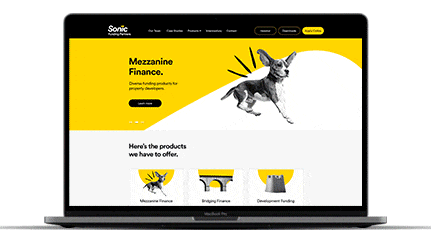Leading Tips for Creating an Impactful Web Site Layout That Transforms
In today's electronic landscape, the value of an impactful internet site style can not be overstated, specifically when it comes to converting visitors into customers. To accomplish this, one need to think about a variety of elements, consisting of recognizing the target market, focusing on individual experience, and enhancing for mobile platforms. The strategic use of compelling call-to-actions and a distinct visual hierarchy plays a vital function in guiding customers with their journey. As we explore these important components, it comes to be evident that the success of your internet site rests on more than just looks; it calls for a thoughtful approach to layout and capability.

Understand Your Target Market
Understanding your target audience is fundamental to effective website layout, as it prepares for developing an engaging individual experience. Identifying who your users are, including their demographics, choices, and behaviors, allows designers to customize the site's content, layout, and capability to meet certain demands.
Performing complete marketing research is important in this procedure. Surveys, meetings, and analytics can supply valuable insights right into individual expectations and discomfort points. By assembling this data, developers can produce user identities that stand for different sectors of the target market, making sure that style decisions are educated and relevant.
Furthermore, comprehending the target audience helps in selecting proper layout aspects such as color design, typography, and images that resonate with individuals. A site that speaks directly to its audience fosters a feeling of connection and trust, motivating longer sees and higher conversion rates.
Ultimately, a user-centered technique to web site style not only boosts individual contentment but likewise supports service goals by driving interaction and loyalty. By focusing on the needs and preferences of the target audience, a website can efficiently offer its objective and accomplish desired end results.
Prioritize Individual Experience
To improve the total performance of a site, prioritizing individual experience (UX) is necessary (Website Design). A properly designed UX makes certain that site visitors can browse the site easily, discover info rapidly, and engage with content meaningfully. This causes increased customer satisfaction and higher conversion rates
Begin by applying instinctive navigation. Menus should be practically structured, enabling users to find key locations of the site with minimal initiative. Consistency in design elements, such as shade plans and font styles, cultivates familiarity, which is essential for preserving individual interaction.
Additionally, think about the packing speed of your web site. A delay of just a couple of seconds can bring about substantial drop-offs, as individuals are much less likely to await a slow-loading page. Streamlining pictures and maximizing code can enhance efficiency and keep visitors.
By focusing on individual experience, you not just develop a more pleasurable setting for visitors however likewise strengthen your brand's trustworthiness. Eventually, an emphasis on UX is a financial investment in the long-lasting success of your site.
Enhance for Mobile Tools
Enhancing for mobile phones is crucial in today's electronic landscape, where a boosting variety of individuals access internet sites via smartphones and tablets. A mobile-friendly design not just enhances user experience but also plays a substantial role in improving online search engine rankings. To accomplish this, it is necessary to adopt a responsive layout that instantly adapts to numerous display sizes and orientations.

Loading rate is another vital factor; mobile individuals are normally much less client and anticipate fast accessibility to info. By prioritizing mobile optimization, you make sure that your website stays competitive and efficiently involves a visit this site right here more comprehensive target market.
Use Engaging Call-to-Actions
A site's performance usually hinges on its capability to lead site visitors toward desired actions, making engaging call-to-actions (CTAs) essential elements of design. CTAs work as the critical points that route users to engage with the website, whether that implies purchasing, enrolling in an e-newsletter, or downloading and install a resource.
To develop reliable CTAs, quality is extremely important. Usage succinct language that clearly communicates the activity you desire the customer to take.
Furthermore, consider utilizing directional cues, such as arrows or images, to direct users towards these buttons. By focusing on these elements, services can significantly enhance customer interaction, driving conversions and inevitably attaining their website's objectives.
Concentrate On Visual Power Structure
Efficient internet site layout relies heavily on a well-structured aesthetic pecking order that overviews users with content seamlessly. By arranging components in a manner that prioritizes info, developers can improve individual experience and assist in decision-making. This entails using size, shade, contrast, and spacing tactically to accentuate one of the most critical parts of a page.
Using larger fonts for headings and subheadings develops a clear distinction in between different sections, permitting users to check material easily. Furthermore, using different colors for switches and calls-to-action can catch individual interest and encourage interaction. Whitespace is one more vital part; it prevents clutter and allows customers to concentrate on key messages without diversions.
Photos and graphics need to match the message while likewise sticking to the recognized power structure, enhancing the general message (Website Design). Uniformity in design elements, such as color schemes and typography, further enhances the aesthetic pecking order, making navigation user-friendly
Verdict
To conclude, effective website design demands a comprehensive understanding of the target market, prioritization of user experience, and mobile optimization. The critical use compelling call-to-actions and a well-defined visual pecking order additionally boosts user interaction. By applying these my response concepts, web sites can accomplish greater conversion rates, making certain that style aspects not just bring in site visitors yet additionally assist in smooth navigating and interaction. Eventually, a well-executed web site style functions as browse this site an essential element in driving user actions and attaining service objectives.